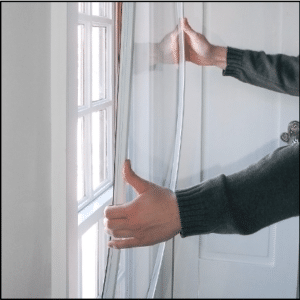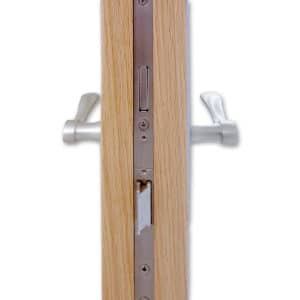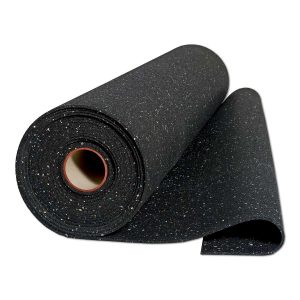Soundproof paint has become incredibly popular over the last few years. I’ve had so many clients ask about it, thinking they could use it to achieve recording studio-level soundproofing. Unfortunately, that’s not the case. So, I want to take some time to dispel any myths about this “revolutionary” product and set the record straight.
Soundproofing vs. Sound Absorption
Before I get into soundproof paint, I want to talk about the difference between soundproofing and sound absorption. It’s a common misconception that these two things are the same. When, in fact, they’re very different and describe two totally different things.
Soundproofing is the process of reducing sound transmission between rooms. It usually involves blocking sound from one room to another, or from outside. The goal of soundproofing is to stop sound from transferring in and out of a room. This is typically what we offer recording studios, homes near busy intersections, music rooms, etc.
Sound absorption is the process of reducing sound reflection inside a room. For instance, if you have a room with a lot of echo or noise that makes it difficult to hear conversations or focus on work, you’re probably needing some sound absorption. This is typically what we offer restaurants, conference rooms, auditoriums, etc.
What is Soundproof Paint?

Soundproof paint is a specially formulated paint that contains sound-absorbing particles. Once it’s applied to a surface, it creates a thin layer between the wall and whatever sound it’s intended to absorb. That might sound like science fiction, but to the credit of the manufacturers, it does work how it’s intended…sort of.
How Does it Work?
The sound-absorbing particles in soundproof paint create little pockets within the paint that absorb sound. It’s usually made from material like latex. These particles are designed to trap sound waves and convert them into thermal energy, which is then dissipated into the air. Pretty interesting, right?
Is it Effective?
Unfortunately, the answer is no. Soundproof paint is what I like to call a “deceptive solution.” While it may offer some level of sound reduction, it only addresses high frequencies, essentially the frequencies of typical children speaking.
It does nothing to reduce midrange and lower frequencies, which is often why people want acoustic solutions in the first place. For that reason, it usually isn’t effective enough to soundproof a room. It has other faults, too.
Texture
Soundproof paint requires a thick coat that creates a raised or speckled-looking surface. Since it has to be applied multiple times to be remotely effective, the texture problem only worsens.
Color
Soundproof paint is also limited to lighter pastel colors because of the amount of pigmentation in the paint. As a result, you’re highly restricted to the colors you can use in your overall design aesthetic.
Soundproofing
Sound paint isn’t suitable for soundproofing applications because it absorbs and displaces sound rather than blocking it completely. It just isn’t effective enough to be your primary soundproofing solution.
While soundproof paint may offer some level of sound reduction, it’s not effective enough to get the job done by itself. If you’re looking for an effective soundproofing solution, look no further than the products from Acoustical Solutions.
How to Soundproof the Different Parts of a Room with Solutions That Actually Work
At Acoustical Solutions, we offer high-quality engineering at a wide range of prices, styles, and effectiveness. So, no matter what you’re looking for, we definitely have an option that’s perfect for you.
Here are some of our most popular acoustic solutions, broken down into different parts of a room:
Windows

Soundproofing a window is easy with PrivacyShield
Single-pane and double-pane windows don’t block a lot of noise, but replacing every window in your home or office can be super expensive. Fortunately, there are alternatives that make soundproofing your windows easier than ever. Here is a great option for soundproofing your windows:
Doors

PrivacyShield® Soundproof Door closeup of Door Thickness
Doors are especially vulnerable to sound transference because so many holes and cracks around the door’s edge and frame make it easy for unwanted noise to slip through. You could install a new PrivacyShield® Soundproof Door, but there are also other affordable solutions available that might be right for you:
Walls
If you’re looking for soundproofing solutions, you have to start with your walls. Is there enough insulation? How much sound are you trying to block? These are the types of questions we have to answer before we can recommend a solution for your home or office. These are our go-to products for new or renovated wall assemblies to stop sound transmission to adjacent spaces:
Floors

Iso-Step® Floor Underlayment
The same goes for floors. Many of the acoustic solutions out there are dependent on your needs. If you’re looking for a reliable solution for most floor projects, this is the one I’d recommend:
Ceilings

PrivacyShield® Ceiling Tile Barrier 2’x2′
You can also use products to soundproof ceilings. These are super effective in almost any room size and highly depend on your style and aesthetic. Here are some of our go-to acoustical solutions for ceilings:
Soundproof Your Space with Products from Acoustical Solutions
If you’re searching for high-quality, effective acoustic solutions for your home, office, or building, don’t waste your time or money on an ineffective, expensive, and time-intensive product like soundproof paint. Instead, use products you know will work from acoustic professionals who know what they’re doing and care about getting the job done right!
Contact us today to learn more about how we can help soundproof your space.
To learn more about how Acoustical Solutions can solve your noise control problems, use our contact form, call one of our Acoustical Sales Consultants at (800) 782-5742, or visit us on the web at acousticalsolutions.com.